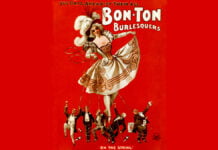A masque is a form of festive courtly entertainment that flourished in the 16th and early 17th centuries, particularly in England. Masques combined poetry, music, dance, elaborate costumes, and stage design to create a spectacular performance, often featuring allegorical or mythological themes. Masques were performed primarily for the royal court and invited guests, usually involving members of the aristocracy as performers.
Originating in primitive religious rites and folk ceremonies known as disguising or mummery, masques evolved into elaborate court spectacles that entertained European royalty under various names. In Renaissance Italy, under the patronage of Lorenzo de Medici, the intermezzo became known for its emphasis on song, dance, scenery, and stage machinery. It included a dance or masked ball where the guests mingled with the actors. A nondramatic form, the trionfo, or triumph, evolved from these Italian court masques and, arriving in France, gave rise to ballet de cour and the more spectacular masquerade.
During the 16th century, the European continental masque travelled to Tudor, England, where it became a court entertainment played before the king. Gorgeous costumes, spectacular scenery with elaborate machinery to move it on- and offstage, and rich allegorical verse marked the English masque. During the reign of Elizabeth I, the masque provided a vehicle for compliments paid to the queen at her palace and during her summer tours through England. It peaked in England during the reigns of James I and Charles I, with significant contributions from poets and playwrights such as Ben Jonson and designers like Inigo Jones.
Jonson invented the antimasque, the false masque, and produced the first in 1609. It took place before the main masque, concentrated on grotesque elements, and provided a direct contrast to the elegance of the masque that followed. Later, the masque became opera, and the antimasque became primarily a farce or pantomime. The English Civil War and the rise of Puritanism led to a decline in the popularity of the masque, as it was associated with royal extravagance and frivolity.
Characteristics
Masques are known for their lavish costumes, elaborate sets, and sophisticated special effects; the masque was a visually stunning form of entertainment. They integrated multiple art forms, including poetry, music, dance, and acting, creating a multifaceted performance. The narratives often drew from classical mythology and allegory, using these themes to flatter and entertain the audience, particularly the monarchy. Nobles and even the monarch usually participated in the performance, blurring the lines between spectators and performers. The masque frequently included allegorical elements meant to symbolize virtues, celebrate the monarch, or comment on political and social issues, often in a flattering manner.
Themes and Motifs
Order and Disorder
The transition from the chaotic world of the antimasque to the harmonious world of the main masque symbolized the restoration of order and the power of the monarchy.
Allegory and Symbolism
Characters and events in the masque often represented abstract concepts or political allegories, such as virtue, justice, or the triumph of good over evil.
Flattery of the Monarch
The masque often served to glorify and flatter the ruling monarch, portraying them as wise, just, and powerful.
Classical and Mythological References
Classical mythology and references to ancient cultures were common, lending an air of sophistication and timelessness to the performances.
Structure
Antimasque
A comic or grotesque performance that often preceded the main masque, it featured characters and scenes of disorder and chaos, serving as a contrast to the idealized and orderly world of the masque.
Main Masque
The central performance typically involves allegorical or mythological themes. It included the entrance of the masquers, elaborate dances, and songs.
Revels
The concluding segment saw the performers and the audience, especially the nobility, join in dances and celebrations, symbolizing the unity and harmony of the court.
Noted Contributors
One of the most prominent writers of masques was Ben Jonson, whose works include “The Masque of Blackness” (1605) and “The Masque of Queens” (1609). His masques often featured elaborate poetic dialogue and allegorical themes. Inigo Jones, an influential architect and stage designer, collaborated with Jonson and others to create innovative sets and stage machinery that brought the masques to life. Thomas Campion, a poet and composer who was also a leading figure of this genre, is known for his contributions to the music and lyrics of several masques.
The masque influenced the development of theatre, particularly in the use of elaborate staging and integration of multiple art forms. As a reflection of courtly life and values, the masque provides valuable insights into the cultural and political climate of the Renaissance. While the masque largely disappeared after the 17th century, its influence can be seen in modern theatre, opera, and pageantry, where similar elements of spectacle and integration of arts are employed.



























